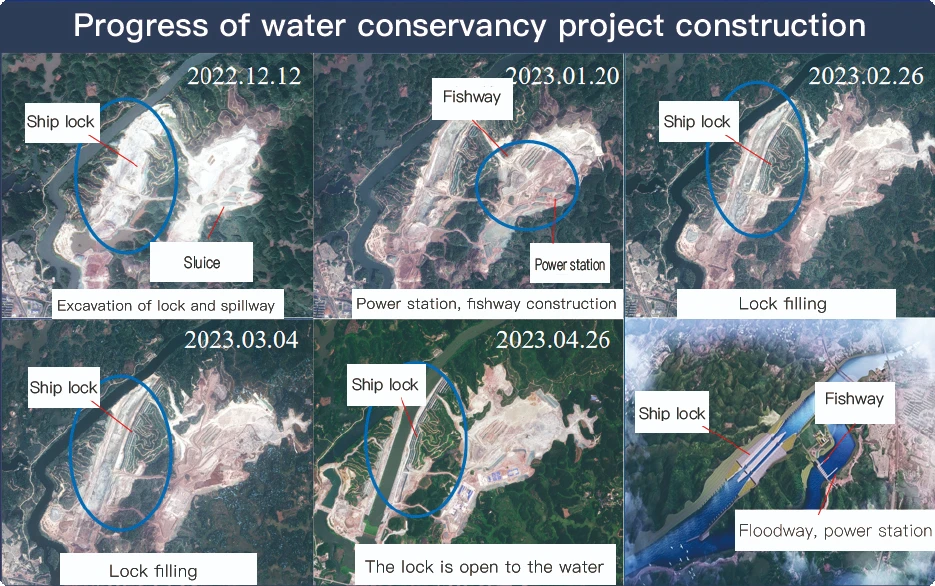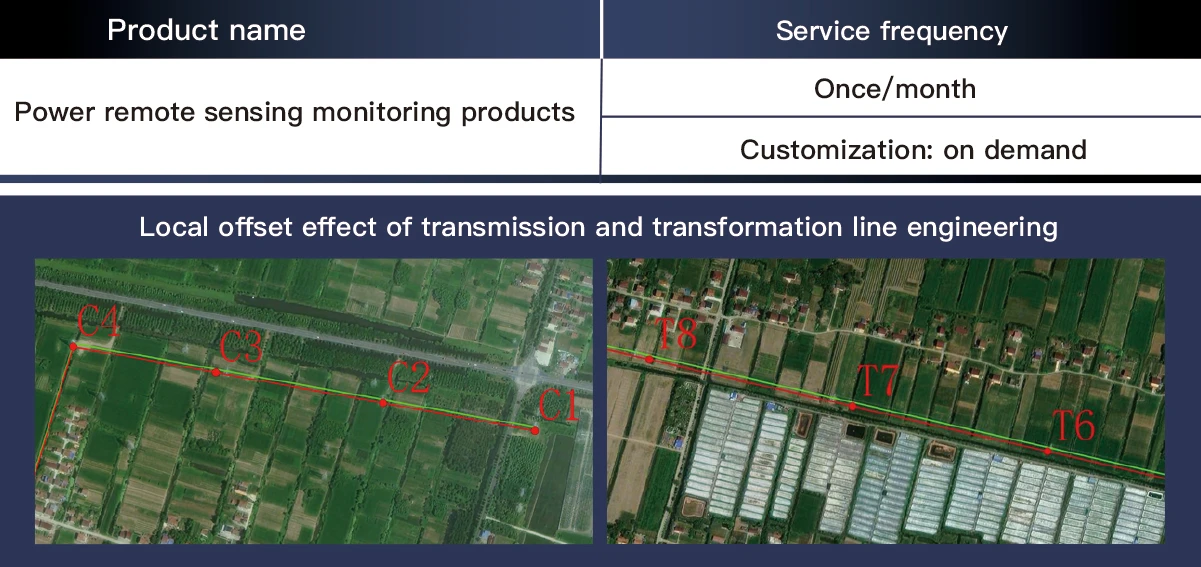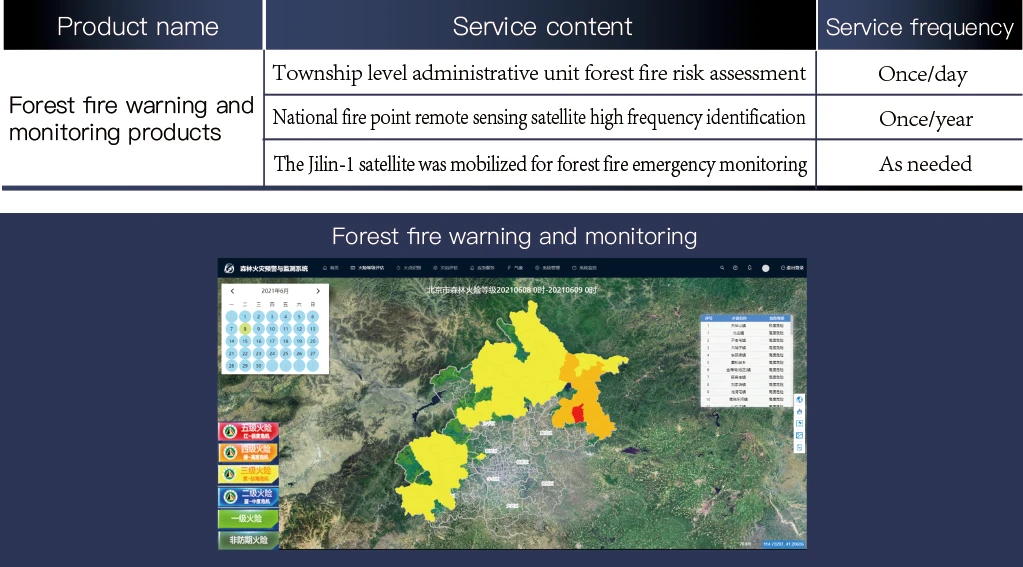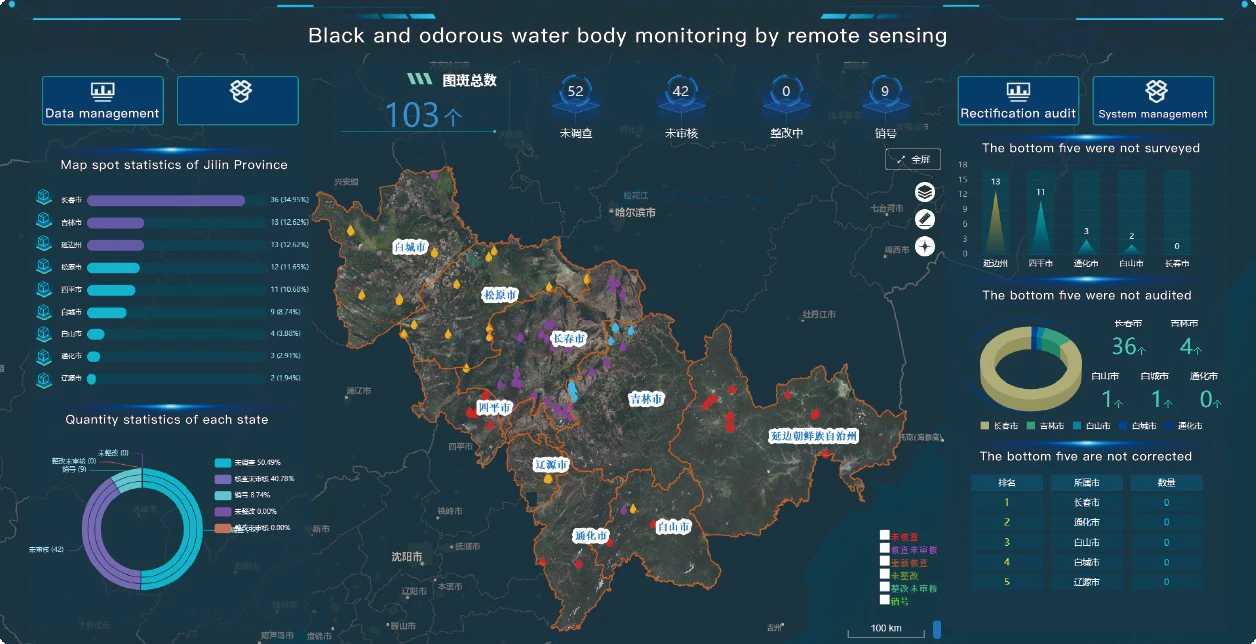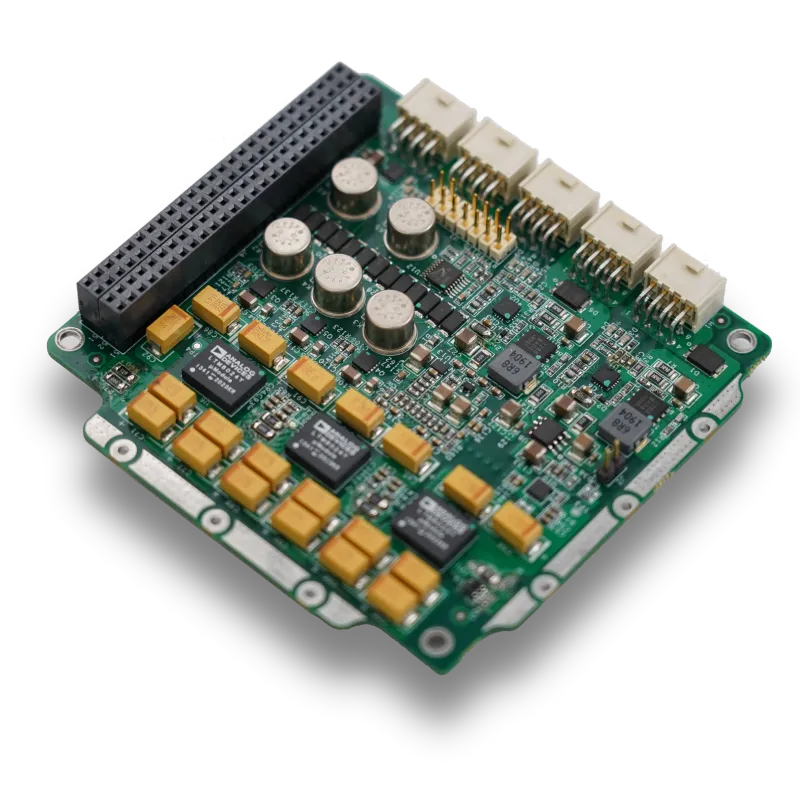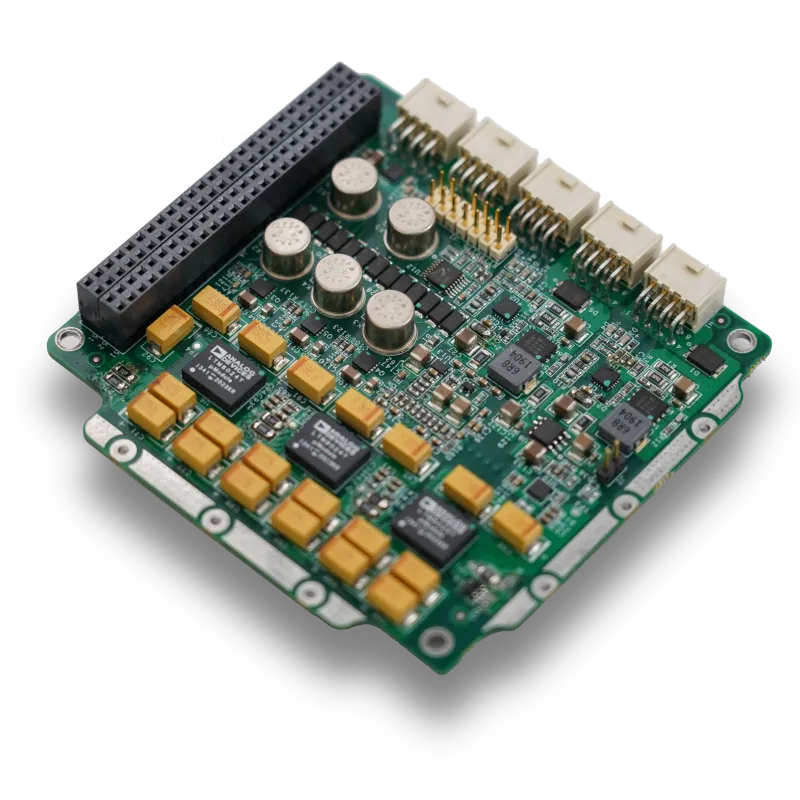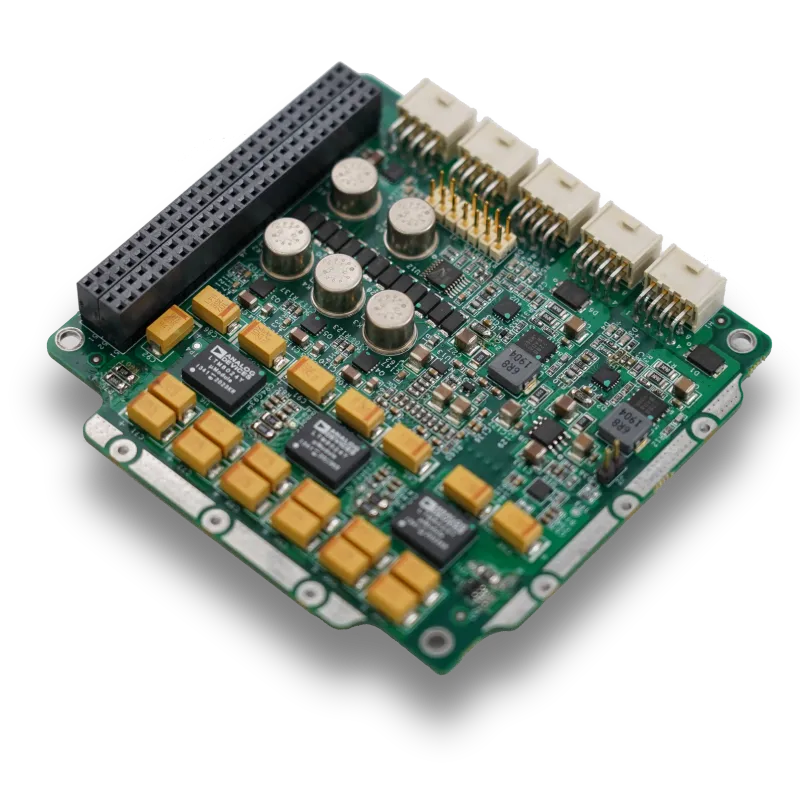Warning: Undefined array key "array_term_id" in /home/www/wwwroot/HTML/www.exportstart.com/wp-content/themes/1371/header-lBanner.php on line 78
Warning: Trying to access array offset on value of type null in /home/www/wwwroot/HTML/www.exportstart.com/wp-content/themes/1371/header-lBanner.php on line 78
High-Precision Multispectral Camera for Advanced Analysis
Introduction to Multispectral Camera Technology
In the rapidly evolving landscape of advanced sensing and imaging, the multispectral camera stands out as a pivotal technology, offering capabilities far beyond the human eye. Unlike conventional RGB cameras that capture images across three broad visible light bands, a multispectral camera precisely captures image data within specific, narrow spectral bands across the electromagnetic spectrum. This allows for the identification and analysis of material properties and conditions that are otherwise invisible, providing invaluable insights for a multitude of industrial and scientific applications. From environmental monitoring to precision agriculture, and from industrial inspection to medical diagnostics, the ability to discern subtle spectral signatures unlocks a new dimension of data-driven decision-making. Our Multispectral Camera With A Resolution Of 5m embodies this advanced capability, designed to deliver high-fidelity spectral data critical for robust analytical outcomes in demanding B2B environments.
This article delves into the intricacies of this sophisticated imaging solution, covering its foundational principles, critical technical specifications, diverse application scenarios, and the stringent manufacturing processes that ensure its reliability and performance. We will also explore industry trends, compare various vendor offerings, discuss tailored customization options, and present compelling case studies to illustrate its real-world impact.
Key Industry Trends in Multispectral Imaging
The multispectral imaging market is experiencing robust growth, driven by advancements in sensor technology, artificial intelligence (AI), and the increasing demand for non-destructive inspection across various sectors. Key trends shaping this industry include:
- Miniaturization and UAV Integration: Smaller, lighter, and more power-efficient multispectral camera systems are increasingly being integrated into Unmanned Aerial Vehicles (UAVs) for applications like precision agriculture, forestry, and environmental monitoring. This enables high-resolution data acquisition over large areas with unprecedented flexibility and cost-efficiency.
- Hyperspectral Convergence: While distinct, the lines between multispectral and hyperspectral imaging are blurring. There's a growing demand for cameras offering more spectral bands, sometimes exceeding 10-15 bands, to provide finer spectral resolution for more detailed material discrimination.
- AI and Machine Learning Integration: The vast datasets generated by multispectral imaging camera systems are ripe for AI and machine learning algorithms. These technologies are being leveraged for automated feature extraction, classification, anomaly detection, and predictive analytics, significantly reducing processing time and improving accuracy.
- Edge Computing: Processing spectral data closer to the source (on the camera or drone) reduces latency and bandwidth requirements, enabling real-time decision-making in critical applications such as autonomous navigation for inspection robots or immediate crop health assessment.
- Expanded Industrial Applications: Beyond traditional remote sensing, multispectral technology is finding new traction in industrial quality control (e.g., food sorting, pharmaceutical inspection), recycling (plastic identification), and security (counterfeit detection, surveillance with a multispectrum infrared combination camera).
These trends highlight a market moving towards greater integration, automation, and intelligent data processing, enhancing the utility and accessibility of advanced spectral analysis.
Technical Specifications of Our Multispectral Camera
Our Multispectral Camera With A Resolution Of 5m is engineered for high performance and reliability, featuring robust design and precision optics. Below are its core technical specifications, reflecting its capability to deliver accurate and actionable spectral data.
| Parameter | Specification |
|---|---|
| Resolution (Effective Pixels) | 5 Megapixels (2592 x 1944) |
| Spectral Bands | 6 user-configurable bands (e.g., Blue, Green, Red, Red Edge, NIR1, NIR2) |
| Wavelength Range | 450nm - 900nm (Visible to Near-Infrared) |
| Sensor Type | CMOS Global Shutter |
| Pixel Size | 3.45 µm x 3.45 µm |
| Frame Rate | Up to 30 fps (full resolution) |
| Dynamic Range | 70 dB (typical) |
| Data Output | 12-bit RAW data per band |
| Interface | GigE Vision, USB3 Vision |
| Lens Compatibility | C-Mount (multispectral lens recommended for optimal performance) |
| Operating Temperature | -10°C to +50°C |
| Power Consumption | Typically 5W |
The selection of a Global Shutter CMOS sensor is crucial for capturing distortion-free images of moving objects, essential in applications like drone-based mapping or conveyor belt inspection. The 12-bit RAW data output ensures maximum radiometric fidelity, preserving the subtle spectral variations required for advanced analysis. Our camera's modular design also allows for the integration of specialized multispectral lens options, tailored to specific field-of-view and working distance requirements.
Manufacturing Process Flow of a Multispectral Camera
The creation of a high-performance multispectral camera involves a meticulous multi-stage manufacturing process, ensuring precision, reliability, and adherence to stringent industry standards. Our process emphasizes quality control at every step, from material selection to final calibration.
Schematic Manufacturing Steps:
- 1. Optical Component Fabrication:
- Materials: High-purity optical glass (e.g., Schott, Ohara), specialized dielectric coatings.
- Process: Precision grinding, polishing, and shaping of individual multispectral lens elements. Application of multi-layer anti-reflection (AR) coatings using vacuum deposition techniques to minimize light loss and ghosting. Fabrication of narrow-bandpass optical filters (typically dichroic filters or interference filters) for each specific spectral band.
- Standards: Adherence to ISO 10110 for optical element drawings, MIL-PRF-13830B for optical coatings, ensuring surface quality and spectral performance.
- 2. Sensor Module Integration:
- Materials: High-performance CMOS or CCD image sensors, specialized PCB substrates, high-grade semiconductor packaging materials.
- Process: Integration of the image sensor onto a custom-designed PCB with readout electronics. Precision wire bonding and encapsulation. Active cooling components (e.g., thermoelectric coolers for temperature stabilization) may be integrated.
- Standards: IPC-A-610 for electronic assembly, JEDEC standards for semiconductor packaging.
- 3. Mechanical Housing and Chassis Production:
- Materials: Aerospace-grade aluminum alloys (e.g., 6061-T6), stainless steel, specialized composite materials for lightweight and rugged designs.
- Process: CNC machining for precision housing components to tight tolerances (typically ±0.01mm). Surface treatments like anodizing or powder coating for corrosion resistance and durability. Assembly of internal mounts for optical elements and sensor modules.
- Standards: ISO 2768 for general tolerances, ASTM B209 for aluminum alloys, NEMA IP ratings for environmental sealing. This ensures the camera maintains structural integrity and environmental protection, crucial for applications in petrochemical and metallurgy.
- 4. Multi-Sensor Assembly and Alignment:
- Process: Precise alignment of multiple filtered sensor modules or a single sensor with a beam-splitting optical block. This step is critical to ensure accurate pixel registration across all spectral bands, minimizing spatial misregistration. Often involves micro-positioning stages and sophisticated optical metrology.
- Testing: Geometrical calibration using targets (e.g., checkerboards) to correct for lens distortion and co-registration errors.
- 5. Electronic Integration and Firmware Loading:
- Process: Integration of the sensor module with power management, data processing units (FPGAs/DSPs), and communication interfaces (GigE, USB3). Loading and testing of embedded firmware.
- Standards: IEC 61000 for EMC compliance, ensuring reliable operation in industrial environments.
- 6. Radiometric and Spectral Calibration:
- Process: Calibration using NIST-traceable light sources and spectroradiometers. This process quantifies the camera's response to known light intensities across each spectral band, enabling accurate conversion of digital counts to physical radiance or reflectance values. Dark noise and flat-field corrections are applied.
- Testing: Measurement of Signal-to-Noise Ratio (SNR), Modulation Transfer Function (MTF), and spectral response curve verification.
- 7. Environmental and Durability Testing:
- Process: Subjecting finished cameras to vibration, shock, temperature cycling, and humidity tests to ensure performance in harsh operational conditions. Water and dust ingress testing to verify IP ratings.
- Standards: MIL-STD-810G, IEC 60068.
- 8. Final Quality Assurance and Certification:
- Process: Comprehensive functional tests, final visual inspection, and documentation. Issuance of calibration certificates.
- Certifications: Compliance with ISO 9001 for quality management systems. Products may carry CE, FCC, and RoHS certifications depending on market requirements.
This rigorous manufacturing process ensures a service life typically exceeding 7-10 years under normal operating conditions, making our multispectral camera a reliable asset for long-term industrial deployment.
Application Scenarios and Technical Advantages
The versatility of multispectral camera technology allows it to address complex challenges across diverse industries. The ability to distinguish materials and conditions based on their unique spectral signatures offers significant advantages over traditional imaging.
Target Industries:
- Precision Agriculture: Monitoring crop health, detecting early signs of disease or pest infestations, assessing water stress, and optimizing fertilizer application.
- Environmental Monitoring: Mapping vegetation distribution, assessing forest health, detecting algal blooms, and monitoring water quality in natural and industrial settings (e.g., water supply & drainage systems for contaminant detection).
- Industrial Inspection: Quality control in manufacturing (e.g., sorting plastics, identifying foreign objects in food, detecting defects in textiles), non-destructive testing of materials.
- Mining & Geology: Mineral identification, geological mapping, and optimizing resource extraction.
- Petrochemical & Metallurgy: Detecting corrosion, stress fractures, and material degradation in pipelines, tanks, and structural components. Our cameras are designed with robust housings to withstand harsh environments prevalent in these industries.
- Medical & Pharmaceutical: Tissue analysis, early disease detection, quality control of pharmaceutical products.
- Security & Surveillance: Enhanced object detection and camouflage penetration, especially when combined with infrared capabilities in a multispectrum infrared combination camera.
Advantages in Typical Application Scenarios:
Scenario: Precision Agriculture (Crop Health Monitoring)
Technical Advantage: Detection of early stress indicators. Plants reflect heavily in the Near-Infrared (NIR) spectrum when healthy, and this reflection drops significantly under stress (e.g., water deficiency, nutrient lack, disease). Our multispectral camera captures precise Red Edge and NIR data, allowing for the calculation of vegetation indices like NDVI and NDRE. These indices reveal sub-visual stress long before it's apparent to the human eye.
Demonstrated Benefit: Farmers can apply targeted interventions (water, fertilizer, pesticides) only where needed, leading to significant energy saving through reduced resource consumption (e.g., 10-15% reduction in water usage, 20% in fertilizer costs) and increased yield. Reduces environmental impact by minimizing chemical runoff.
Scenario: Petrochemical Infrastructure Inspection
Technical Advantage: Material identification and anomaly detection. Certain hydrocarbons and byproducts exhibit unique spectral absorption features in specific visible and NIR bands. A multispectral visible imaging camera can identify subtle surface residues or early stages of corrosion that alter the spectral reflectance of metals.
Demonstrated Benefit: Enhanced safety and predictive maintenance. Early detection of leaks or corrosion can prevent catastrophic failures, saving lives and avoiding environmental disasters. The robust construction of our cameras ensures corrosion resistance, even in aggressive chemical environments, extending the service life of inspection equipment and reducing maintenance costs by up to 30% through proactive repairs.
The ability of a multispectral camera to provide quantitative data based on spectral signatures translates directly into actionable intelligence, enabling predictive maintenance, optimized resource allocation, and enhanced quality control across critical industrial operations.
Vendor Comparison: Multispectral Camera Solutions
The market for multispectral imaging solutions is diverse, with various vendors offering cameras tailored to different application niches. When evaluating a multispectral camera, key differentiating factors include resolution, number of spectral bands, sensor type, radiometric accuracy, and integration capabilities. Below is a comparative overview, positioning our Multispectral Camera With A Resolution Of 5m against typical industry offerings.
| Feature | Our 5MP Camera | Competitor A (Entry-Level) | Competitor B (High-End) |
|---|---|---|---|
| Resolution (MP) | 5 MP | 1.2 MP - 3.2 MP | 5 MP - 10 MP+ |
| Spectral Bands | 6 (User Configurable) | 3-5 Fixed Bands | 8-15+ Bands (often fixed) |
| Wavelength Range | 450-900nm (Vis-NIR) | 450-850nm (Vis-NIR) | 400-1000nm+ (Vis-SWIR) |
| Sensor Type | CMOS Global Shutter | CMOS Rolling Shutter | CMOS Global Shutter / CCD |
| Radiometric Accuracy | High (Calibrated RAW) | Moderate (Basic calibration) | Very High (NIST traceable) |
| Image Distortion (Motion) | Minimal (Global Shutter) | Noticeable (Rolling Shutter) | Minimal (Global Shutter) |
| Integration | GigE/USB3, SDK, API | USB2/Ethernet, basic SW | GigE/CoaXPress, advanced SDK |
| Customization | High (Lens, Filters, SW) | Limited | Moderate |
| Typical Price Point | Mid-Range | Low to Mid-Low | High to Very High |
Our 5MP multispectral camera is positioned to offer an optimal balance of high resolution, spectral flexibility, and radiometric accuracy, making it suitable for a wide array of demanding professional applications without the prohibitive costs associated with ultra-high-end hyperspectral systems. The use of a global shutter CMOS sensor specifically addresses motion blur, a common issue with rolling shutter cameras in dynamic environments.
Customized Solutions for Specific Needs
Recognizing that off-the-shelf solutions may not always perfectly align with highly specialized project requirements, we offer extensive customization capabilities for our multispectral camera systems. Our engineering team collaborates closely with clients to tailor solutions that integrate seamlessly into existing workflows and address unique operational challenges.
- Spectral Band Configuration: While our standard camera offers 6 configurable bands, we can customize the specific wavelengths and bandwidths of the optical filters to target unique spectral features relevant to a client's materials or processes. This includes extending into SWIR (Short-Wave Infrared) with appropriate sensor and multispectral lens modifications.
- Lens and Optics Optimization: Selection and integration of specialized multispectral lens options, including those for wide-angle, telephoto, macro imaging, or specific working distances. This ensures optimal spatial resolution and light throughput for specific applications.
- Mechanical and Environmental Adaptations: Design of custom enclosures for extreme temperatures (-40°C to +85°C), high humidity, vibration, or hazardous environments (e.g., ATEX certification for petrochemical installations). This includes specific mounting solutions and IP ratings.
- Software Development Kit (SDK) Customization: Provision of flexible SDKs and APIs for seamless integration with client's proprietary software platforms, enabling custom data processing, real-time analytics, and automated control.
- Integration with Robotics and UAVs: Development of lightweight, compact versions of the camera with optimized power consumption and communication protocols for robotic platforms or drones, facilitating advanced autonomous inspection missions.
- Lighting Solutions: Integration with specific illumination sources (e.g., LED arrays, tunable light sources) optimized for the camera's spectral bands to enhance contrast and object discrimination in controlled environments.
Our decades of experience in optical engineering and system integration allow us to deliver robust, high-performance customized multispectral solutions, ensuring that our clients achieve their precise operational objectives.
Application Case Studies
Real-world deployments demonstrate the transformative power of multispectral camera technology. Here are a few examples showcasing the impact of our solutions.
Case Study 1: Large-Scale Forest Health Assessment
A leading forestry management company faced challenges in rapidly assessing forest health over vast, inaccessible terrains, particularly for early detection of beetle infestations and disease. Traditional ground surveys were labor-intensive and slow, often missing early signs of distress.
Our solution involved deploying UAVs equipped with our Multispectral Camera With A Resolution Of 5m. The camera was configured with specific bands in the Red Edge and NIR spectrum, known to be sensitive to chlorophyll content and cellular structure changes in vegetation. The high-resolution imagery allowed for detailed analysis at the individual tree level.
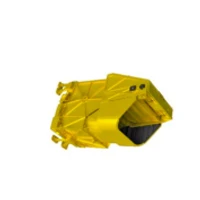
Outcome: The forestry company achieved a 70% reduction in inspection time and a 40% increase in early disease detection rates compared to manual methods. This enabled proactive management strategies, saving millions in potential timber losses. Customer feedback indicated significant appreciation for the camera's radiometric stability and robust performance in varying lighting conditions.
Case Study 2: Automated Quality Control in Food Processing
A major food processing plant required an automated system to detect foreign objects and quality defects (e.g., bruising, mold) in fruits and vegetables on a high-speed conveyor belt. Visible inspection often missed internal bruising or subtle contamination.
We integrated our 5MP multispectral camera into their existing production line, utilizing custom spectral filters to highlight specific absorption and reflection characteristics of contaminants and defects. For instance, mold often exhibits distinct spectral signatures in the visible-NIR range that healthy produce does not.
Outcome: The system achieved a defect detection accuracy of over 95%, leading to a 25% reduction in product recalls and significantly improved food safety standards. The plant reported a 15% increase in throughput due to automated, faster inspection. The project highlighted the value of a high-resolution multispectral visible imaging camera for nuanced quality control.
Case Study 3: Remote Corrosion Detection in Water Supply & Drainage
A municipal water utility needed a non-invasive method to inspect aging underground pipes for early signs of corrosion without extensive excavation, especially in critical water supply & drainage infrastructure.
Our team deployed a specialized rover equipped with a ruggedized multispectral camera, configured to detect the distinct spectral signatures of iron oxides (rust) and pipe coating degradation. The camera’s corrosion resistance properties were vital for operation in damp, confined environments.
Outcome: The utility was able to identify high-risk sections of piping with 85% accuracy, allowing for targeted preventative maintenance. This proactive approach avoided several major pipe bursts, saving millions in emergency repair costs and minimizing service disruptions to consumers. This showcases the camera's ability to operate reliably in challenging industrial environments and provide critical insights for infrastructure integrity.
Frequently Asked Questions (FAQ)
- Q: What is the primary difference between a multispectral and a hyperspectral camera?
- A: A multispectral camera captures data in a few (typically 3-10) relatively broad spectral bands, chosen for specific applications. A hyperspectral camera, conversely, captures data in hundreds of very narrow, contiguous spectral bands, providing a continuous spectral curve for each pixel. While hyperspectral offers more detail, multispectral is often sufficient and more cost-effective for targeted applications.
- Q: How do I choose the right spectral bands for my application?
- A: The selection of spectral bands depends heavily on the materials or phenomena you wish to observe. Our technical team works with clients to identify optimal bands based on the known spectral signatures of target materials or by conducting preliminary spectral analysis of samples. For instance, Red Edge and NIR are crucial for vegetation analysis, while specific visible bands might be critical for detecting certain color variations or contaminants.
- Q: Is your multispectral camera suitable for outdoor use in harsh conditions?
- A: Yes, our cameras are designed with robust mechanical housings (e.g., CNC machined aluminum, often with IP-rated enclosures) and are subjected to rigorous environmental testing (temperature, humidity, vibration). They are suitable for demanding outdoor and industrial environments, including those found in petrochemical and mining industries, ensuring long-term reliability and corrosion resistance.
- Q: What kind of support is available after purchase?
- A: We provide comprehensive after-sales support including technical documentation, software updates, remote troubleshooting, and direct access to our engineering team for specialized queries or advanced integration assistance. On-site support and training can also be arranged.
- Q: Can your multispectral camera be integrated with existing drone platforms?
- A: Absolutely. Our cameras are designed with standard interfaces (GigE Vision, USB3 Vision) and can be easily integrated into most professional drone platforms. We also offer lightweight and compact configurations specifically optimized for UAV deployment, with robust SDKs for flight control and data acquisition software integration.
Lead Time, Warranty, and Customer Support
We are committed to providing exceptional service and support throughout the lifecycle of our multispectral camera solutions.
Lead Time and Fulfillment:
Standard configurations of our Multispectral Camera With A Resolution Of 5m typically have a lead time of 4-6 weeks from order confirmation, subject to component availability. For customized solutions involving specialized spectral filters or mechanical adaptations, lead times may extend to 8-12 weeks, depending on the complexity of the engineering required. We maintain transparent communication regarding production schedules and provide regular updates to ensure timely project execution. Our fulfillment process includes rigorous final testing and careful packaging to ensure safe delivery globally.
Warranty Commitments:
All our multispectral camera products are backed by a comprehensive 2-year limited warranty covering defects in materials and workmanship from the date of purchase. This warranty demonstrates our confidence in the quality and durability of our manufacturing processes, which adhere to ISO 9001 standards. Extended warranty options and service contracts are also available for clients requiring long-term coverage or specific uptime guarantees. Our commitment to quality ensures a long service life and reliable operation.
Customer Support:
Our dedicated customer support team and expert engineers are available to assist with integration, operation, and troubleshooting. We provide:
- Technical Support: Access to a team of optical and software engineers for in-depth technical assistance via phone, email, or video conferencing.
- Documentation & Resources: Comprehensive user manuals, technical specifications, SDK guides, and application notes.
- Software Updates: Regular firmware and software updates to enhance performance and add new features.
- Training: Customized training programs can be arranged for client teams to ensure proficient operation and maintenance of the camera systems.
- Maintenance Services: Calibration services and repair facilities to ensure optimal performance over the product's extended service life.
Conclusion
The Multispectral Camera With A Resolution Of 5m represents a cutting-edge solution for a myriad of B2B applications, from precision agriculture to critical industrial inspection. Its ability to capture precise spectral information across multiple non-visible bands provides unparalleled insights, enabling data-driven decisions that enhance efficiency, safety, and profitability. Backed by rigorous manufacturing processes, adherence to international standards, and a commitment to customer-centric customization and support, our multispectral camera is engineered to meet the demanding requirements of today's advanced industries. As industries continue to seek more granular and actionable intelligence, the role of advanced multispectral imaging will undoubtedly expand, solidifying its position as an indispensable tool for future innovation and operational excellence.
References
- 1. Lillesand, T. M., Kiefer, R. W., & Chipman, J. W. (2015). Remote Sensing and Image Interpretation (7th ed.). John Wiley & Sons.
- 2. Campbell, J. B., & Wynne, R. H. (2011). Introduction to Remote Sensing (5th ed.). Guilford Press.
- 3. American Society for Testing and Materials (ASTM) Standards for Materials and Testing. (Ongoing). ASTM International.
- 4. International Organization for Standardization (ISO) Standards for Quality Management and Optics. (Ongoing). ISO.
- 5. National Institute of Standards and Technology (NIST) Radiometric Calibration Guidelines. (Ongoing). NIST.


